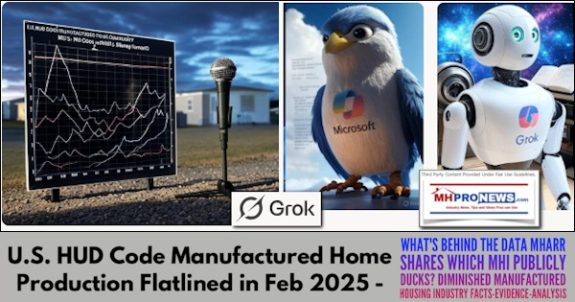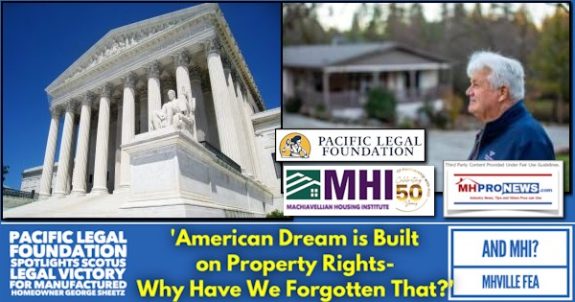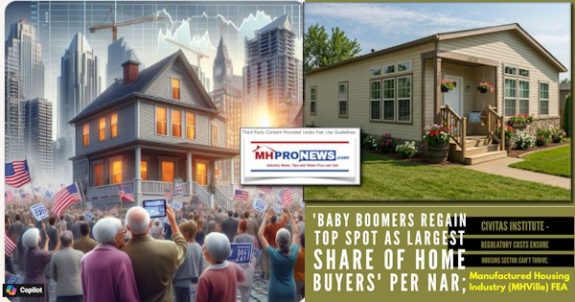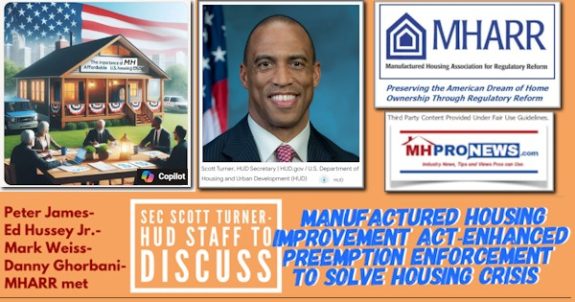Update on 2012 Election Results & End of the 112th Congress
By winning nearly every key swing state including Colorado, Ohio, Virginia and Wisconsin, President Obama was able to successfully hold off Governor Mitt Romney’s challenge and secure a second term. Additionally, given Democratic gains in the House and Senate, it is not widely anticipated that Obama will seek to strike a conciliatory mood with Republicans on fiscal issues, or on issues related to a softening of Dodd-Frank.
MHI is pleased that key manufactured housing industry supporters Sen. Sherrod Brown (D-OH) and current Rep. Joe Donnelly (D-IN) were able to secure Senate victories. Rep. Donnelly, who is currently a sponsor of our House bill, H.R. 3849, successfully won the Senate seat in Indiana being vacated by Sen. Richard Lugar (R-IN).
In the House, both of our remaining bill sponsors, Reps. Stephen Fincher (R-TN) and Gary Miller (R-CA) were also re-elected. In total, the MHI-PAC distributed in excess of $126,000 to support 59 federal candidates. Of those candidates running in 2012 (excluding retiring members and Senators not currently in cycle), the MHI-PAC boasted a win percentage of 93 percent. Additionally, at least 33 of the 43 cosponsors of H.R. 3849 have been reelected to the House.
Looking forward, Congress returned to work this week and will stay in session until the Thanksgiving holiday. The House and Senate will then reconvene in December to complete work in time to adjourn prior to the Holidays. Issues expected to dominate the lame duck session, include:
• FY 2013 appropriations
• Extension of 2001 and 2003 tax cuts
• Sequestration
• Increase of debt ceiling
During the lame duck session, MHI will continue to work to pass our legislation (H.R. 3849 and S. 3484) reforming portions of the Dodd-Frank and SAFE Acts. The session could potentially offer opportunities to attach portions of these bills to larger measures moving through each chamber. During this time, MHI members are strongly urged to continue contacting their members of Congress to request they support either H.R. 3849 or S. 3484. For more information, click here to access the MHI action alert.
Manufactured Housing Industry Assists in Hurricane Sandy Response and Recovery
Hurricane Sandy devastated much of the Northeast declaring major disaster areas across four states. Yet, times of great adversity bring out the best in people. Throughout the affected areas and the country, communities have come together to help with the recovery effort. Members of the manufactured housing industry from as far away as Georgia have reached out to assist with the disaster response. In New York alone, it is estimated that as many as 80,000 homes may be permanently displaced. As winter weather arrives, impacted communities are still in the initial stages of ensuring that disaster survivors are evacuated and sheltered safely and securely.
FEMA and state and local officials are reviewing damage assessments to determine approximately how many households will require temporary housing assistance and what type of temporary housing is most appropriate. In the next several days, FEMA is likely to ask those manufactured home builders who are FEMA-approved contractors to begin producing temporary housing units. Industry members are working with FEMA officials to identify available sites for temporary emergency housing communities.
Disaster officials are providing financial assistance to survivors for rental shelter. States and affected counties are providing information on available rental homes and apartments. State manufactured housing associations have been asked to help identify available manufactured homes on retail sites that may be used as well as available sites in land lease communities that could be utilized for temporary housing.
Manufactured home retailers and land lease communities that suffered damage in the disaster may take advantage of a variety of state, federal, and local resources, including small business disaster housing loans, community development block grants, rural housing loan assistance, and FHA mortgage insurance for rehabilitation of land lease community homes.
The manufactured housing industry can play a key role in permanent housing replacement. Hurricane Katrina demonstrated that communities that are inclusive in decision-making and coordinated engagement – including the manufactured housing industry – can successfully rebuild. Get involved now before the next disaster strikes! Here are a few ways you can help:
• Work with your state manufactured housing association to participate in state disaster planning and recovery efforts.
• Be part of the community planning process. Connect and collaborate with your local emergency planning group, Citizen Corps Council, or local emergency management agency.
• Contact your local news media about the benefits and advantages of using factory built housing for both residential and multifamily housing.
• Volunteer to support disaster efforts in your community. Volunteer and train with a Community Emergency Response Team, Medical Reserve Corps unit, and/or other Citizen Corps Partner Program or Affiliate organization.
• Join or start a preparedness project. Find an event or identify local resources, build a team, choose a project, set goals, and serve your community by improving the preparedness of your friends and neighbors.
• If you have services to provide, register as a FEMA vendor and take advantage of the numerous business opportunities that occur after a major disaster.
Click here for more information about disaster response and recovery resources.
Building America Advanced Envelope Design Project Advances
The Systems Building Research Alliance in cooperation with the Building America ARIES team will be sponsoring a full-day meeting on Thursday, November 29th in Harrisburg, PA where six leading insulation companies will present concepts for next generation, high performance wall systems for factory built homes.
The six companies—AFM Corporation, BASF, DOW, Johns Manville Saint Gobain (CertainTeed), and Owens Corning —have been working closely with an industry committee in developing their design approaches. The wall designs are intended to meet the very stringent requirements of industry energy standards slated for implementation in 2013.
4,382 New HUD-Code Homes Shipped in September 2012
In September 2012, 4,382 new manufactured homes were shipped, down 13.0 percent from September 2011. The trend varied by housing type with shipments of single section homes down by 26.4 percent compared with the same month last year, while shipments of the multi-section homes showed an increase.
In comparison with the previous year, 2012 recorded shipment increases every month from January through August. September marked the first month of a relative decline in shipments. Over the nine-month period, total industry shipments stands at 41,880 homes compared with 37,031 homes in 2011, a year-to-date increase of 13.1 percent. A total of 6,942 floors were shipped in the month, a decrease of 8.4 percent over September 2011.
The seasonally adjusted annual rate (SAAR) of shipments was 47,076 in September 2012, down 18.3 percent from the rate of 57,639 in August 2012. The SAAR corrects for normal seasonal variations in shipments and projects annual shipments based on the current monthly total.
The number of plants reporting production in September was 122 and the number of active corporations was 44, both unchanged from the prior month.


























